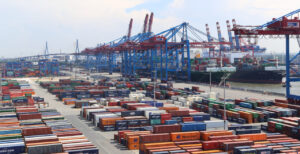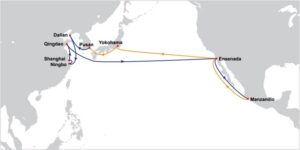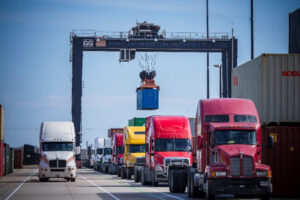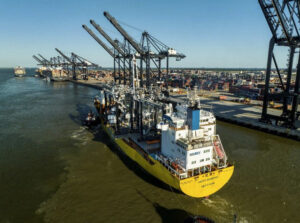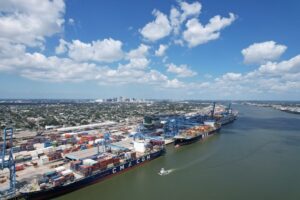Ports and terminals must collaborate with labour unions, supply chain stakeholders and each other to reap the benefits from its numerous emerging technologies.
As we enter an age of exponential technological growth people will continue to be at the heart of the discussion regardless of what innovations are being consider at the terminal operation level.
During the panel on emerging technologies at CTAC 2020, Panagiotis Fragkos, Yard and Gate Superintendent, DP World London Gateway, said “collaboration is key” and that all successful projects are the “fruits of collaboration”.
Drawing on DP World’s experience, Fragkos said that best practices can only be found when terminals reach out to other stakeholders and ports. This creates a safe and productive environment where everyone can add value..
The importance of collaboration and integrating people into a smart and advanced industrial environment has increased in 2020 as the COVID-19 pandemic and other factors have forced ports and terminals to reassess their business models.
Piet Opstaele, Innovation Enablement Manager, Port of Antwerp, said the industry is now in a period of “exceptional growth” in terms of technology and that innovation is “a means to create new value”.
When innovating and implementing new technologies ports and terminals must continue to support people and communities, according to Dr Rafiq Swash, Founder of AIDrivers. This was particularly true when terminals look to retrofit, an area where AIDrivers has made great efforts to utilise artificial intelligence (AI).
Swash said the company’s ‘Autonomous Retrofitting’ concept can install existing infrastructure, including vehicles and cranes, with “AI enabled perception, precision positioning and intelligent control”.
This enables integrated autonomous operations that meet a terminal automation needs without any change to the existing terminal environment, according to Swash, who also said AI can make terminal operations more resilient.
Key to any AI-enabled operation is utilising data and sharing it between terminals and across the supply chain, a notoriously hard task and one that has forced some to build platforms where information can be seen by multiple stakeholders.
Fragkos said DP World extracts what it calls “raw data” and presents it in a form that “makes sense to management” and be utilised to make intelligent decisions through a system called ClickView.
This process itself requires a high-level of innovation and an understanding of how the workforce in terminals and wider maritime industry is changing.
Meena Shah, Sales Engineer, Navis, pointed out that millennials will soon account for 75% of the global workforce and that the terminal industry had to grow technological competencies to stay competitive.
Shah said Machine Learning (ML) was an example of how terminals can make better use of their data and “enable Actionable Intelligence”, and cited examples of how Navis had used three years’ worth of terminal data to improve clients’ operations.
Benefits of ‘Actionable Intelligence’ Shah said included the ability to predict cargo volume and what equipment and upgrades will be needed in the future. It can also help avoid congestions, a matter which has become a substantial problem for container ports and terminals as they look to process a backlog of containers and new traffic.


